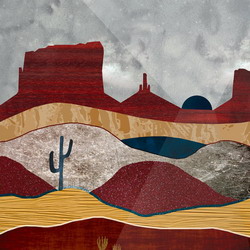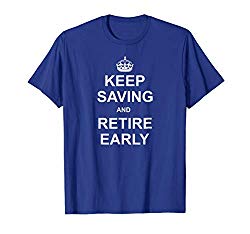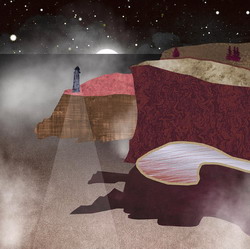The Myth Of Increasing Violent Crime In America
Where were you 30 years ago in 1991? If you weren’t born yet or were too young to recall, it was a pretty big year in history. It was the year of the formal dissolution of the Soviet Union, and the first Gulf War.
Nirvana’s Nevermind was released 1991, changing the rock music landscape. And oh yeah, the first ever page was stood up on the World Wide Web, launching the world into the information age (that link goes to the exact page btw). If you weren’t alive in 1991 you missed a big one.
It was also the year that violent crime in the United States peaked, and it’s been declining steadily ever since. In the face of a general media culture that would like to convince you otherwise, America’s rate of violent crime (and all crime) has been going down, pretty drastically.
Why am I writing about violent crime on a personal finance blog? Because geoarbitrage is a popular strategy to reach financial independence or retire early, and it’d be nice to know the places with less violent crime.
I should know, I grew up in Baltimore City and have had guns pointed at me more than once. It tends to ruin your day.
The Data
You know how we roll at Accidental FIRE, let’s get to the data. This is right from the official FBI website:

As you can see violent crime peaked in 1991 and despite a handful of years of small or modest increases it has been steadily declining ever since. Like the stock market there is a clear overall trend regardless of the change in any single year.
The big takeaway is the rate of violent crime in 2019 was less than half of what it was in 1991. This post will specifically address violent crime but the trend for overall crime is the same.
You might be saying “well that’s not true in my city/state/jurisdiction, we’ve been getting worse.” Regular readers know that I’m a geography geek and as a highly compensated professional blogger I go above and beyond to add value to boring government data. Once again I’m here at your service.
The FBI site does have the data parsed by state, so I pulled it. It was incredibly painful because their site, like most government sites, kinda sucks. Let’s dive in.
Geography Matters
Since 1991 was the peak year of violent crime in America, I decided to map that years violent crime rate by state. Then I did the same for 2019 which is the last year they have. Ok, time for some map porn!
Below is the map for 1991.
(click the map for a larger version)
Florida was the most dangerous state in 1991 with 1184.3 violent crimes per 100,000 people. Here are the 10 states with the highest violent crime rate in 1991:
| State | Number of violent crimes per 100k persons 1991 |
| Florida | 1,184.30 |
| New York | 1,163.90 |
| California | 1,089.90 |
| Illinois | 1,039.20 |
| South Carolina | 972.5 |
| Maryland | 956.2 |
| Louisiana | 951 |
| Alabama | 844.2 |
| Texas | 840.1 |
| New Mexico | 834.8 |
Here are the 10 states with the lowest violent crime rate in 1991:
| State | Number of violent crimes per 100k persons 1991 |
| North Dakota | 65.4 |
| Vermont | 116.8 |
| New Hampshire | 119.3 |
| Maine | 132.1 |
| Montana | 139.9 |
| South Dakota | 182.2 |
| West Virginia | 191 |
| Hawaii | 241.8 |
| Wisconsin | 277 |
| Utah | 286.8 |
Below is the map for 2019. As you can see the value ranges are so much lower than 1991 I had to use a different legend and break the data up differently to even show it correctly.
(click the map for a larger version)
As you can see Alaska had the highest rate of violent crime in 2019. Here are the 10 states with the highest violent crime rate in 2019:
| State | Number of violent crimes per 100k persons 2019 |
| Alaska | 867.1 |
| New Mexico | 832.2 |
| Tennessee | 595.2 |
| Arkansas | 584.6 |
| Louisiana | 549.3 |
| South Carolina | 511.3 |
| Alabama | 510.8 |
| Missouri | 495 |
| Nevada | 493.8 |
| Arizona | 455.3 |
When the data are examined the differences are drastic. For instance notice the big drop from #2 to #3 above. In 2019 Tennessee had the third highest violent crime rate in America at 595.2 violent crimes per 100,000 persons. But that rate in 1991 would have been ranked #22!
It’s amazing how much safer America is now than 30 years ago, it’s not even close.
Here are the 10 states with the lowest violent crime rate in 2019:
| State | Number of violent crimes per 100k persons 2019 |
| Maine | 115.2 |
| New Hampshire | 152.5 |
| Connecticut | 183.6 |
| Vermont | 202.2 |
| New Jersey | 206.9 |
| Virginia | 208 |
| Kentucky | 217.1 |
| Wyoming | 217.4 |
| Rhode Island | 221.1 |
| Idaho | 223.8 |
So now that we’ve seen the 1991 map and the 2019 map, the logical thing to do is a comparison.
Once again I have the goods.
(click the map for a larger version)

Despite an almost exact 50% decline in violent crime overall in America from 1991 to 2019, there were still 9 states that had an increase. But as you can clearly see the trend is a positive one and the vast majority of states had a huge decrease in violent crime during this period.
The ten states with the largest decrease in violent crime from 1991 – 2019 are:
| State | Decrease in violent crime incidents per 100k persons from 1991 – 2019 |
| New York | -69.19% |
| Florida | -68.05% |
| New Jersey | -67.41% |
| Connecticut | -65.98% |
| Illinois | -60.84% |
| California | -59.52% |
| Massachusetts | -55.50% |
| Georgia | -53.85% |
| Maryland | -52.51% |
| Rhode Island | -52.14% |
The easy one to comment on is here New York. Because New York City was such a crime-ridden cesspool in the 80’s and 90’s, there was only one way to go. In 1991 New York City alone (not the whole state) had 2154 homicides with 7.3 million people. That’s 5.9 per day by the way, unbelievable but true.
In 2019 they had 311, with 8.3 million people. That’s an 87% reduction per capita!
Baltimore other hand, a city of 609,000 people had 348 homicides in 2019. Baltimore’s population was 1/13th of New York’s in 2019, yet they had 11% more homicides. I don’t even want to calculate the per capita difference, it’s astronomical.
The ten states with the largest increase (or smallest decrease) in violent crime from 1991 – 2019 are:
| State | Change in violent crime incidents per 100k persons from 1991 – 2019 |
| North Dakota | +335.17% |
| Montana | +189.42% |
| South Dakota | +118.99% |
| Vermont | +73.12% |
| West Virginia | +65.76% |
| Alaska | +41.24% |
| New Hampshire | +27.83% |
| Hawaii | +17.95% |
| Wisconsin | +5.85% |
| New Mexico | -0.31% |
North Dakota is worth commenting on as I know they had a large population influx due to the shale oil boom. And most of that population was probably men since those jobs are mostly physical. And men commit most violent crime by far. That’s my guess for North Dakota’s huge change. Please chime in below if you disagree (politely) or if you live there and can explain.
Vermont and New Hampshire despite increases in violent crime during this period still ranked #2 and #4 for the lowest rates in 2019.
Violent Crime In Urban Areas
Ranking and measuring violent crime in cities and urban centers is harder than you’d think. There can be drastic differences between data for the city proper (the actual city boundaries) versus the metropolitan statistical area (MSA) which is the city plus surrounding suburbs etc.
I spent a few hours doing some analysis and then figured if I looked hard enough someone else had probably done it for me. I’m a professional blogger, so if I can outsource I will.
I found this data of the top 100 most dangerous cities in America. After reading their methodology I found it sound, and it’s based off of the same FBI data from 2019 (official 2020 data won’t be released until late this year).
Here’s the top 10 most dangerous:

My hometown of Baltimore tried to take the crown but alas, they made 4th. As you can see the top 4 have very close numbers. Next year Baltimore, stay classy.
To end on a high note, the same site lists the top 100 safest “cities”. I put that in parenthesis because their criteria to make the list was a population of 25,000. Most of these are located near a major metro area and they list that info as well.
Here’s the top 10:

Perception Is Not Reality
Why do so many people think violent crime has been increasing when in fact it’s been drastically decreasing?
I think it’s a combination of a click-bait news industry that goes by the motto “if it bleeds it leads”, and probably more importantly our 24×7 information-flooded modern environment.
(assumes persona of old man….) When I was a kid we didn’t have the internet and we had 4 channels on TV. Sure we heard about many of the Baltimore crimes and murders on the local news and some happened right in my neighborhood, but the national news on TV covered mostly politics. You couldn’t doom scroll through some social media site seeing gruesome videos of shootings, murders, and violent crimes from anywhere in the country.
But they were happening, and far more frequently than they are now as the data clearly show.
Our ubiquitous media culture combined with a tendency for bad things to rise to the top gives the impression that things are getting worse. They’re clearly not. It’s not even close.
So if anything this post should give you another reason to stay off social media, and stop watching the damn news. They’re literally bleeding, and they’re skewing your perception of reality.
Geoarbitrage
So there you go financial warriors, the truth about violent crime in America with the definitive data. While violent crime has decreased in America a great deal over the past 30 years, we still have a lot of room for improvement.
I post lots of tools like this that show various aspects of money, finance, and other societal factors from a location perspective. If you’re considering Geoarbitrage in the United States this mapping tool can help you find affordable housing.
Also be sure to check out my Geoarbitrage Resources Page that has tons of great tools to help you find your perfect location.
I hope you find these resources handy and I will continue to expose valuable tools that can help when deciding on a geoarbitrage strategy.












































Reminds me of the book “Factfulness” (tl;dr if you look at the data, the world is a better place than it has ever been). Things only seem as bad as they are because, like you pointed out, bad news attracts eyeballs. A good reminder to “tune out” every once in awhile and appreciate how good we have it.
Yep, I’ll check that book out but Stephen Pinker has the definitive book on this with Better Angels Of Our Nature. It’s undeniable that the world keeps getting better, as does America. Yet that fact weirdly angers so many people and that I find strange. It seems many folks want it to be that we’re getting worse, it’s and odd thing.
Pinker lays it out here in his TED Talk.
I hadn’t seen that before but just watched it now. I think it’s the same rough idea. I Lol’d @ “intellectuals hate progress”. Great TED Talk, thanks for sharing!
Yep, and Pinker gets attacked a lot, esp by those of a certain political persuasion who don’t like his message. They have ZERO data or facts to counter his message mind you, so they attack him personally. And he couldn’t be a nicer or more gentle guy.
ha, we make fun of the national news in our house and call it the “panic news.” even though crime has increased in new hampshire and vermont i would take those places to live any day. we go to the adirondacks or saratoga springs to visit every time we return to our small city always say “i didn’t miss this.” some day we’ll leave the knuckleheads behind even though our part of buffalo has gotten much better.
panic news, love it. So so true. America is safer than ever and has been headed in the right direction for 30 years, and that for some reason angers people who refuse to believe it’s true.
Interesting article again! Some have argued that – quite surprisingly – the legalization of abortion in 1970s was behind the tremendous drop of violent crimes 18-20 years later. The story goes that unwanted children are more likely to become troubled adolescents, prone to crime and drug use, than are wanted children. When abortion was legalized in the 1970s, a whole generation of unwanted births were averted, leading to a drop in crime nearly two decades later when this phantom generation would have come of age.
This theory was backed by data thanks to the work of the famous economist Steven Levitt in his 2003 book ‘Freakonomics’ – which is such an interesting read btw.
That’s an interesting take on it, I’ll have to check out Levitt’s work. Thanks for the comment!
Portland doesn’t have a lot of violent crime, but we have a lot of property crime. I often see a car with smashed windows when I’m walking around our neighborhood.
Maybe you can do the same map for property crime. I’d love to see how the trend there.
Joe, Property crime in the USA is down similarly. Wikipedia actually has a graphic on that :
https://en.wikipedia.org/wiki/Crime_in_the_United_States#/media/File:Property_Crime_Rates_in_the_United_States.svg
Thanks for that link Jim!
As another commenter posted property crime rates have also been declining overall in America, but I don’t know about Portland. I can guess that with the sheer amount of riots you had in 2020 property crime definitely went up last year. 2020 will be interesting once the official data come out.
I can’t state this with any evidence, only based on information I hear from family living in the area – one possible factor in the increase of violent crime in ND & SD could be drugs. There has been a steady increase of drug-related activity in the area.
Interesting, thanks for the comment Lisa!
Interesting article and research, as always, Dave! One tiny transposed date to correct if you’re able:
“When the data are examined the differences are drastic. For instance notice the big drop from #2 to #3 above. In 2109 Tennessee had the third highest violent crime rate in America at 595.2 violent crimes per 100,000 persons. But that rate in 1991 would have been ranked #22!”
Thanks again for the research and breaking down the data to benefit us all.
Doh! Thanks, just fixed it. I don’t know what Tennessee’s rate will be in 2109, but if I’m still around then I’m 100% sure I won’t care 🙂
Thanks very much!
Great set of data Dave! I was just looking at this exact same data for a state we’re thinking about moving to.
If you watch the news media it certainly *seems like* violent crime is on the rise! But it’s good to see it’s actually declining!
A great example of how the news and social media can distort reality. Thanks for the data!
Thanks Tako! Wow you are serious about the move, good on you and good luck!
Great topic and analysis as always Dave. I don’t particularly pay attention to stats like these, but this data is fascinating. That graph is insane (in a good way). 50% reduction is massive! Good on you for taking the time to present legit data and rail against the “5 More Minutes and We’ll All Be Dead-isn” of the news.
“5 More Minutes and We’ll All Be Dead-isn” Haha, love it!
My Mom watches the local news and every other night as a preview they do the “Tonight at 11, we went in the kitchen of a local favorite restaurant, and you won’t believe what we found! It’s not good, tune in at 11 for the story!”
Ugh… if everyone just stopped watching that crap we could kill it
Wow, more great usable data! Thank you for all the work I know it took to create it. I think you could charge real estate investors for this type of research and other things you have posted in the past to identify good locations for investments 🙂 though I really appreciate that you are sharing it for free 😁
I appreciate the kudos very much, it did take a while to do!
My heart sank when I saw that my state was listed as one of the highest violent crime rates in 1991 but became elated when I saw that it was no longer the case in 2019. Peace of mind indeed!
Haha, glad I could make you elated!
This is really interesting (and hopeful!), thanks for compiling it. I suppose violent crime encompasses a wide range of crimes. It would seem that gun deaths and mass shootings have increased during that time?
It’s great news. As for gun deaths, they’re way down because overall deaths are down so much and most homicides are from guns. But the percentage of gun homicides of the total would have to be looked at and I don’t know if the FBI state has that. Nor do I know if they have “mass shootings” which is a troublesome term in itself because of how they measure it or use it.
Thanks for the comment!
Can you please fix the legends on the first two maps, so that they match?
No I can’t. The data ranges are way too different for 1991 and 2019. If I used the ranges from the first map for the second there would be no states in the highest range in the second map. That’s a cartographic no-no.
Use the third map to compare, that’s why it’s there. Thanks!
** NOTE ** To all those from Reddit who are upset that I used different legend values for the first two maps. Get a grip. I did it my way for a reason, and if that upsets you then move on.
There’s more to life than this, take it somewhere else please.